"Each year in the country since we moved here 10 years ago (!) has been its own adventure. We have watched our neighbors often dive headfirst into absolutely everything, but, for us, we have been quietly building our homestead year upon year, a chicken coop here, a luffa garden there. Three years ago we decided it was finally time to get buzzed...and then came the bees!"
Making the choice to move to the country came from the desire to try so many things that city life could not offer. From creating our own food sources through gardening and raising animals, to building, crafting, and gaining skills that our ancestors would be proud of, we have opened ourselves up to a world of opportunity to learn how this amazing planet works, and how we can work in harmony with it. Each year in the country since we moved here 10 years ago (!) has been its own adventure. We have watched some of our neighbors dive headfirst into absolutely everything at once, but, for us, we have been quietly building our homestead year upon year, a chicken coop here, a luffa garden there. Three years ago, we decided it was finally time to get buzzed...and then came the bees!
Beekeeping is not for the faint of heart. As much as it is not extremely difficult, there are learning curves like anything, with the added challenge of possibly getting stung by 50,000 of these little buggers on any given trip to the hives. You heard that right, a healthy hive is home to approximately 50,000 bees at their peak! The funny thing is, when your outside picking veggies or enjoying a beer with friends, you barely notice them. In the evening taking a walk around the property, if you step into their beeline back to the hive, you will, but even then, it's easy to forget they are even there most days. We've had quite a bit of success in the last 2 years, harvesting 10 gallons of honey or more in a season. We've also had our share of trials and tribulations, which make for great stories now!
That Time the Hives Toppled
Our first year keeping bees we placed them next to the luffa gardens, which was a win-win for the luffas and the bees! We also planted our large sunflower garden adjacent to the 2 hives. The sunflowers were large, and quite weeded by late in the season, and our hives were rather top-heavy with supers being filled. With the sunflowers and weeds, the ground began to heave up on the left side, creating a slant on our west hive. One late August day, a strong wind came up and took that hive down, it dominoed into the other hive, and both crashed to the ground, falling apart. The wind was whipping from the west, and the bees were pissed. Both Chris and I put on our suits to try and put the hives back together, but the bees were so angry, so confused, and so displaced, I was scared, like REALLY scared, to be around them for the first time that summer. All I kept thinking was, if I stay here trying to do this, I could literally get stung to death, even with a full bee suit. One angry bee did end up getting into Chris' suit, the headpiece, and stung him. He freaked out a bit and whipped off his suit, only to be chased and stung on the head at least 5 more times. I walked away from the hives practically in tears, apologizing to the angry swarm that followed me, telling them I knew they were afraid, and I didn't know what to do. Eventually we pulled ourselves and our heads together and came up with a plan. Bees calm and "go down" at the signs of a fire. Often, when we are entering the hives, we will smoke them to send the bees away from the top of the hive so we can check honey frames, look for the queen, or give them mite treatments. We used this idea and put a smoke ring to the west of the hive. We put brush and grass into the ring and lit it just enough to get it smoking. The wind that was previously our advisory, became our ally, pushing the smoke towards the bees, and they calmed down dramatically. We were able to use this opportunity to stack the boxes back together, placed them on pallets to level them out, and use bungee cords to hold them in place. We have adopted this strategy going forward, and always secure our hives.
The Year of the Super Queen
We headed into year two with new energy, a bit of previous knowledge, and a new brand of bees! I believe, and any beekeeper will tell you, the biggest challenge to keeping bees is overwintering them in our harsh climate. Like 50% of beekeepers, no matter your years of experience, we opened up the hives in the spring and found them all dead. We had tried 2 types of bees the first year, both were from California, and they would probably have preferred to spend their winter surfing. Year two we decided to try our luck with the Saskatraz bees from Saskatchewan, Canada (aye). These bees are known for their docile nature, great honey production, and heartiness to colder temps. We brought them home, excited to see what the season would bring, and had our first big challenge within days. After loading up the bees and allowing them to release their respective queens, we left the hives for 24 hours. The next day we went out to find the queen in eac hive and make sure she had been accepted by the workers. What we found was one hive where the queen was easily spotted and thought, "Perfect! We did good". The next hive we opened only to be shocked by the pure number of bees we saw and couldn't locate the queen anywhere amidst the giant swarm. We assumed she was there and decided to wait another day. The next day we went out to find one of our hives was practically empty of bees, and the other was even more full than the day before. By day 3 we could count the bees in one hive (a hive starts with about 10,000 bees), and still couldn't find the queen in the other. By then, though, we had to assume there was a queen, and not just any queen, we had a Super queen! Sometimes a queen bee gives off so many pheromones that she becomes extra attractive to all bees. In this case, no bees can resist her and they all flock to the hive where she is located. Of course, we had NO IDEA this was even a thing until it happened. That summer we ended up with a super hive and were able to harvest 5 gallons of honey in July (the same amount took us until October the previous year)! Around the 4th of July the temps were hot, and the bees were "bearding" like we had never seen before. Bearding happens when the hive gets warm, and several bees hang out around the entrance "fanning" the hive to promote air flow and keep it cool for the workers. We didn't think too much of it until a few days later when watching them we started to notice 10's of 1000's of bees overhead. We had our first swarm! I had spoken to some of our neighbors previously about beekeeping and they had described when their bees had swarmed in the same way. They started leaving the hive by the thousands and buzzing overhead, they all collected in a tree, and POOF, they were just gone, never to return. This is a beekeeping nightmare, to lose your bees to a crowded hive or a second queen. I had to leave to go to work, but Chris described what followed as his proudest beekeeper moment. The swarm took off, and he went for a walk to try and locate them. He was able to find them, tipping over on a patch of fleabane in the pasture. As the plants slowly dropped to the ground under the weight of the bees, he quickly grabbed a box from the original deserted hive and placed it over them, trapping them on the ground. Then he built the rest of the hive back up on a pallet right there and started scooping the bees into it, rehoming them to the hive. They stayed! We were back to 2 hives and enjoyed a second honey harvest in September!

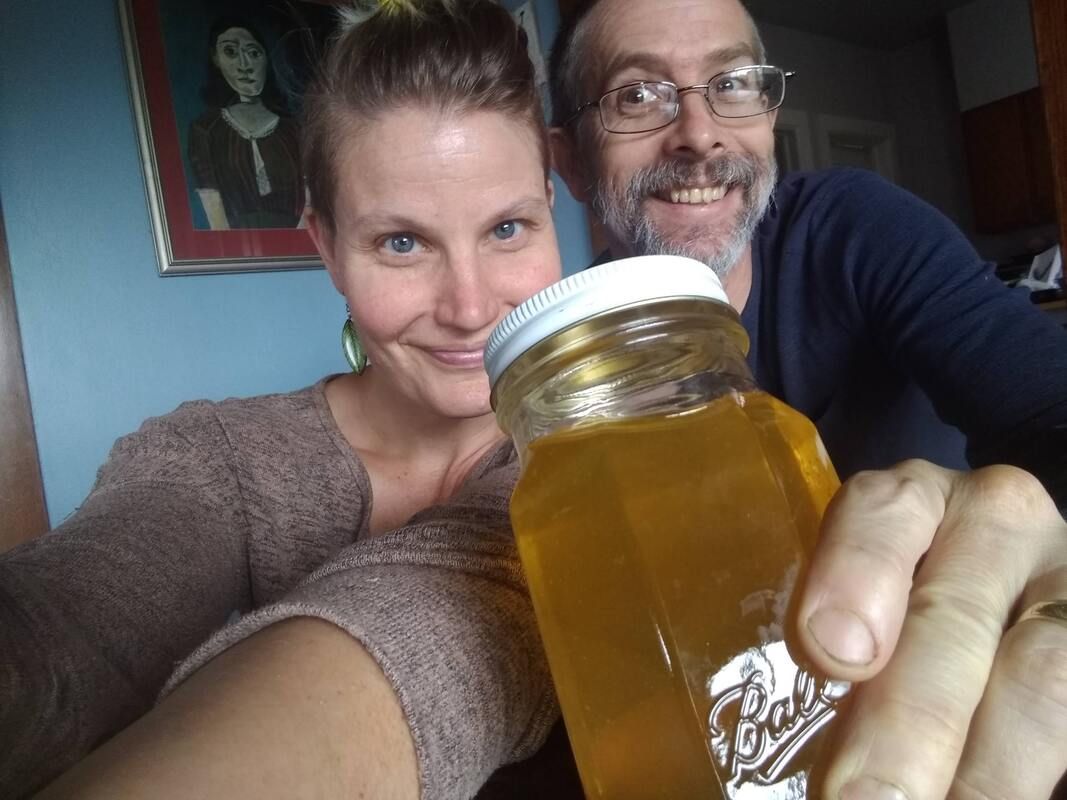
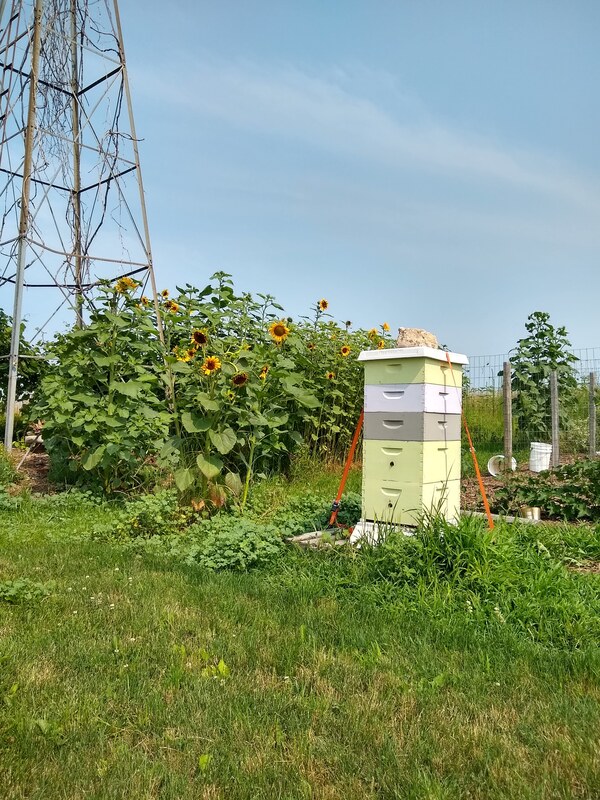
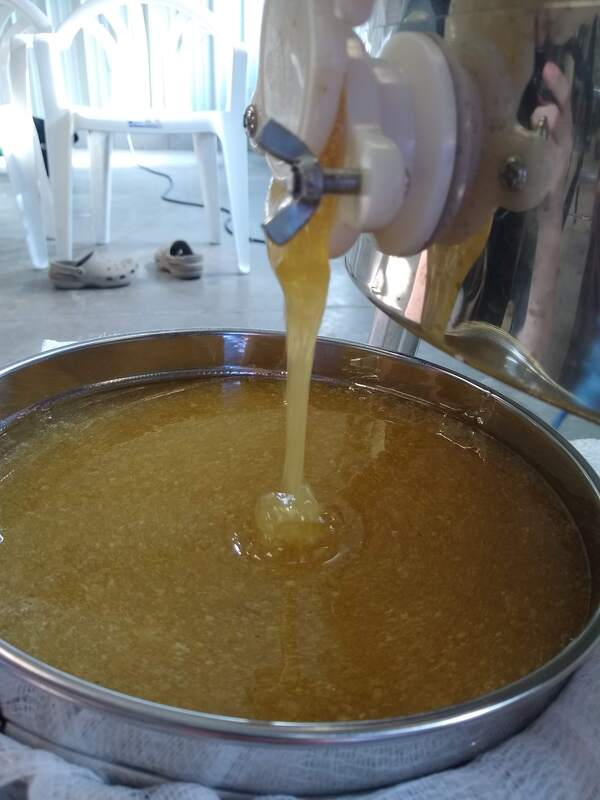
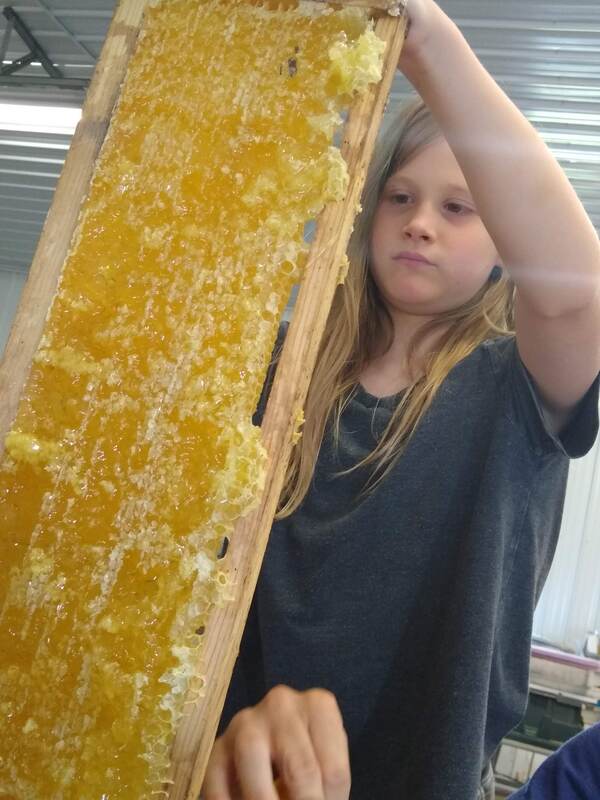
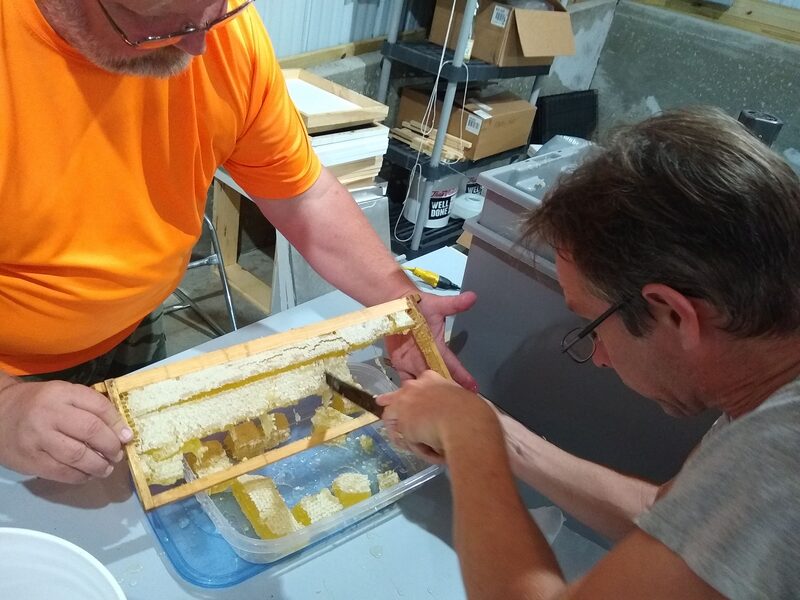
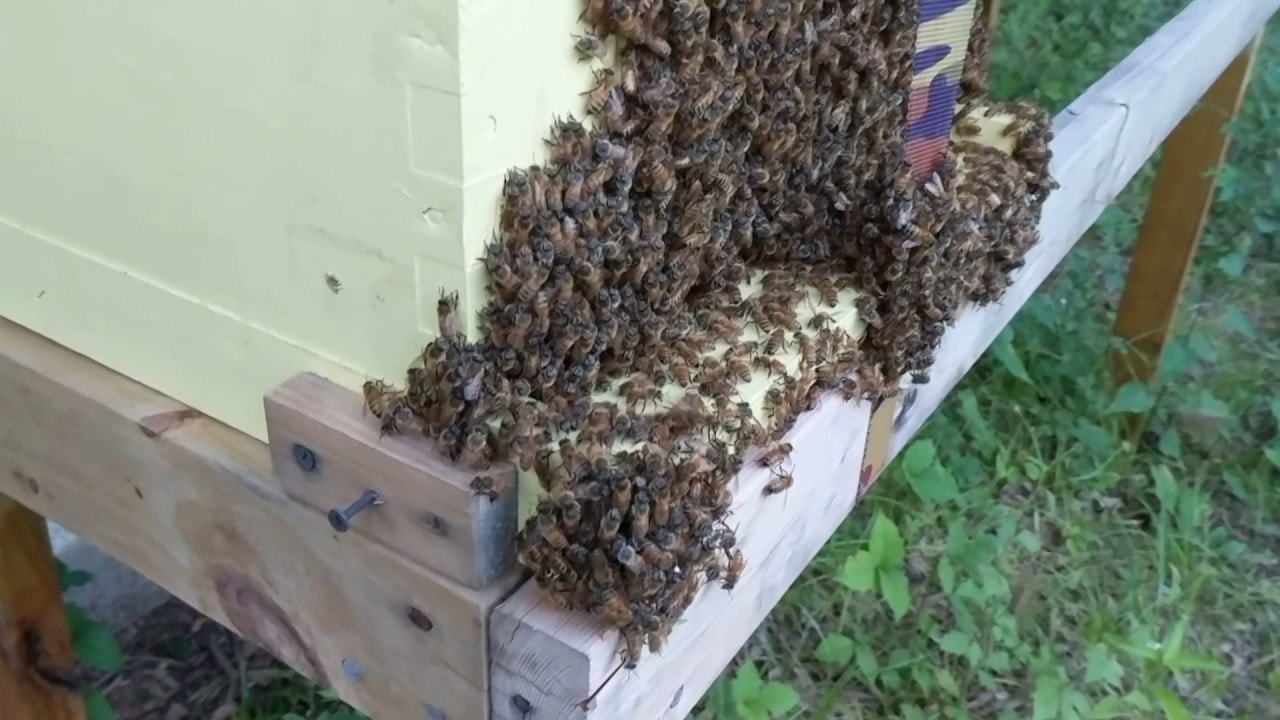
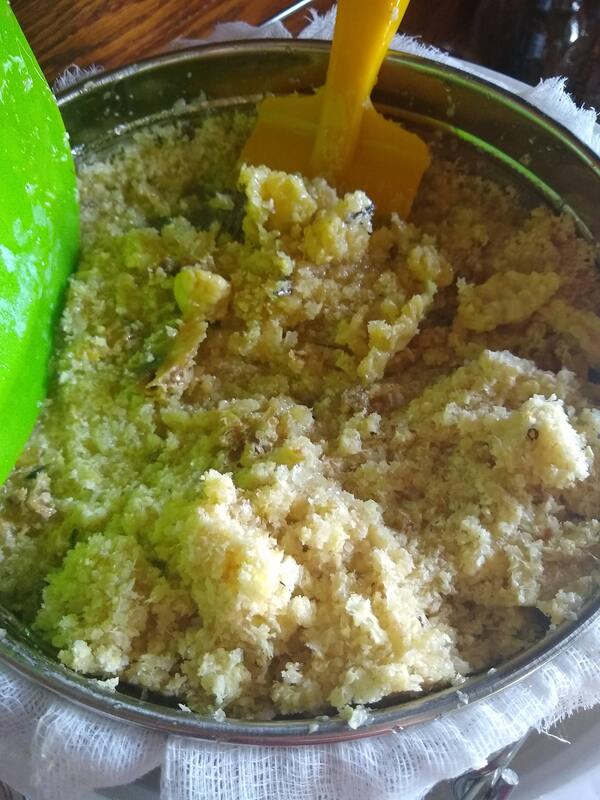
 RSS Feed
RSS Feed